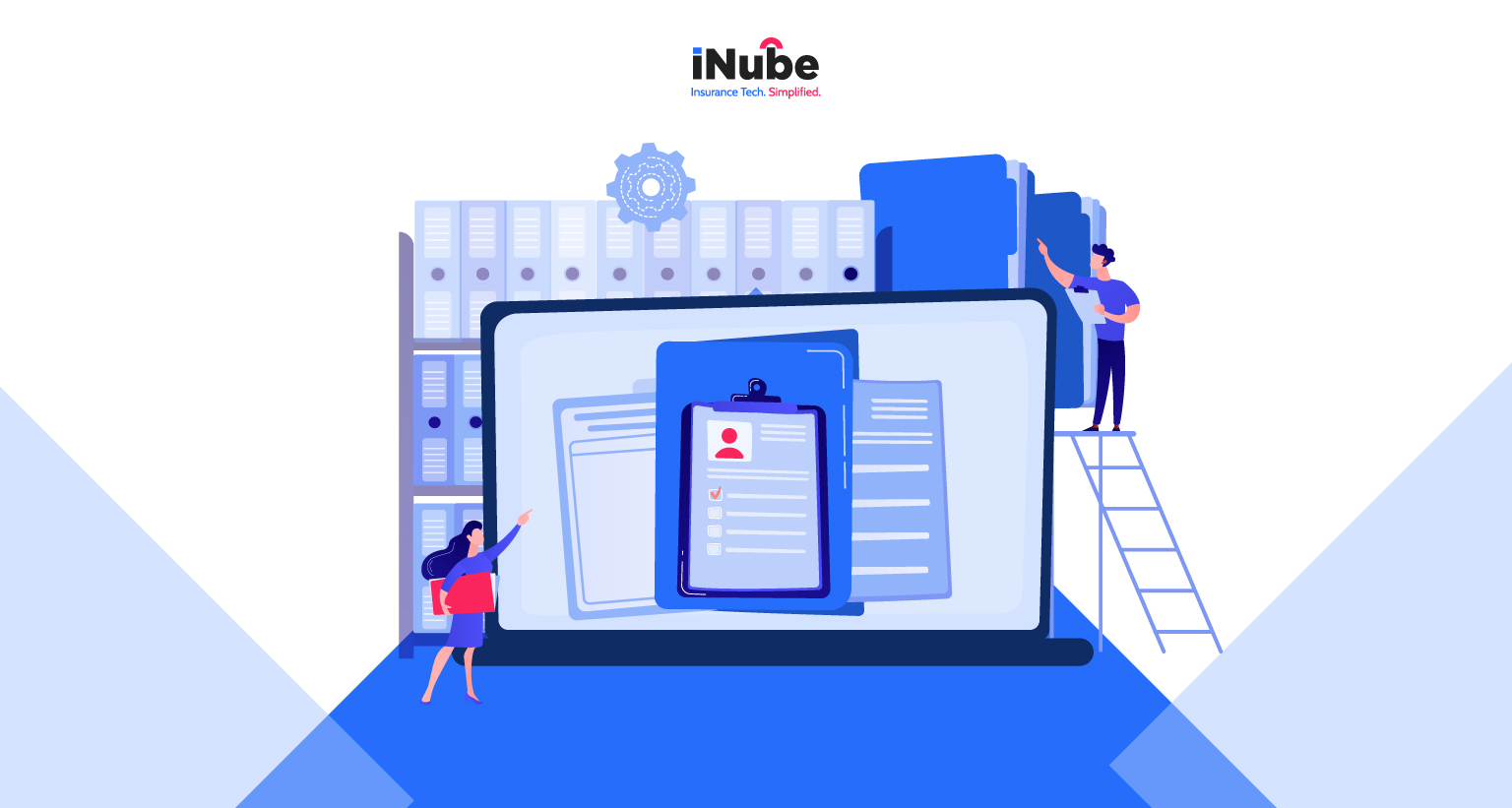In the fast-evolving U.S. insurance landscape, customer expectations are shifting. Policyholders no longer settle for generic plans—they demand tailored solutions that reflect their unique needs and lifestyles. Enter Software as a Service (SaaS) solution, the tech backbone powering this customer-centric revolution. By leveraging cloud-based platforms, insurers are personalizing offerings, streamlining operations, and boosting loyalty in ways traditional models never could.
The Expectations of a Modern Insurance Buyer
Modern consumers demand tailored services across industries, and insurance is no exception. A study by Accenture reveals that insurers offering personalized experiences see an81% increase in customer retention and an 89% boost in customer engagement.
Personalized interactions play a crucial role in enhancing customer satisfaction and retention, as tailored services help strengthen relationships between clients and insurers. By offering policies that align with individual needs, insurers build trust and create value, ultimately improving the customer experience. This makes the process of purchasing, understanding, and managing policies more seamless
According to a McKinsey report, 80% of customers expect personalized interactions with their insurers. This shift is driven by the success of customer-centric models in other industries, such as retail and banking, where personalization has become a key differentiator.
Furthermore, personalization impacts key aspects of the insurance process, such as risk assessment and pricing. By utilizing data to gain deeper insights into customer profiles, insurers can manage risks more effectively and refine their offerings. This leads to more precise risk predictions, benefiting customers with relevant policies while allowing insurers to remain competitive in a rapidly evolving market.
Leveraging SaaS for Personalized Insurance Solutions:
SaaS platforms provide insurers with scalable tools to collect and analyse customer data, facilitating the creation of customized policies and services. These solutions enable real-time data processing, allowing insurers to adjust offerings based on individual behaviours and preferences.
Here’s what leveraging SaaS for personalised Insurance solutions will offer:
- Data-driven insights
- Dynamic policy customization
- Proactive Customer engagement
- Seamless omnichannel experiences
1. Data-Driven Insights
SaaS platforms integrate advanced analytics and artificial intelligence (AI) to process vast amounts of customer data. This includes demographic information, behavioural patterns, and claims history. By analysing this data, insurers can identify customer preferences and predict future needs.
Example: A SaaS-powered platform might analyze a customer’s driving behavior (via telematics) to offer personalized auto insurance premiums. Safe drivers could receive discounts, while high-risk drivers might be offered additional safety features or training programs.
2. Dynamic Policy Customization
With SaaS, insurers can create flexible policies that adapt to changing customer circumstances. For instance, a young professional might start with a basic health insurance plan but can easily upgrade to a more comprehensive policy as their family grows.
Example: Nationwide has embraced SaaS-driven solutions to offer personalized, dynamic auto insurance policies. Through its SmartRide program, Nationwide uses telematics and SaaS platforms to collect and analyze driving behaviour, enabling them to customize policies and premiums for individual customers. For this Nationwide has reported a 15% increase in customer satisfaction among SmartRide participants
3. Proactive Customer Engagement
SaaS platforms enable insurers to engage with customers proactively. For example, if a customer’s data indicates they might need life insurance (e.g., after the birth of a child), the insurer can send personalized recommendations at the right time.
Example: Allstate, a leading US insurer, uses its SaaS-based digital tools to send personalized alerts and tips to customers, such as reminders to review their coverage before hurricane season.
4. Seamless Omnichannel Experiences
Customers expect to interact with insurers through multiple channels—phone, email, chat, or social media. SaaS solutions integrate these channels into a unified platform, ensuring a consistent and personalized experience across all touchpoints.
Example:State Farm’s use of SaaS to deliver a seamless omnichannel experience is a benchmark for the insurance industry. It shows how traditional insurers can modernize their operations to meet the needs of today’s tech-savvy customers while maintaining the personal touch that has always been a hallmark of the industry.
Examples of SaaS-Driven Personalization
Here are some of the real-life examples of SaaS-driven personalization:
USAA’s Predictive Analytics: USAA, a leading provider of insurance and financial services to military members and their families, leverages predictive analytics and artificial intelligence to enhance customer interactions. By analysing historical data, customer behaviours, and life events, USAA proactively suggests relevant insurance products,
Allstate’s AI Integration: Allstate utilizes generative AI models to craft empathetic communications, resulting in clearer and more considerate customer interactions. Through machine learning algorithms and natural language processing (NLP), the insurer has developed virtual assistants that provide empathetic and contextually relevant responses. For instance, when customers file claims, the AI ensures they receive clear, reassuring, and customized communication rather than generic scripted responses. This initiative has streamlined the claims process, reduced resolution times, and improved customer satisfaction scores.
Nationwide SmartHome Assessment Program: Nationwide’s SmartHome Assessment program uses a SaaS platform to create digital twins of insured properties. Homeowners can upload photos or complete virtual assessments of their homes, receiving personalized recommendations for risk mitigation and appropriate coverage levels.
According to Nationwide’s 2023 Agency Forward survey, 44% of homeowners purchase smart home devices to reduce anxiety. However, despite water and fire damage being leading non-weather-related claims, over 90% lack smart water leak sensors, and nearly 80% don’t have monitored smoke or fire hazard devices, indicating a significant protection
Challenges and Considerations
As personalization requires extensive data collection, insurers must navigate increasingly complex privacy regulations like CCPA and potential GDPR-style federal legislation.
Many established insurers struggle with integrating modern SaaS solutions with decades-old legacy systems.
AI-driven personalization systems can inadvertently perpetuate or amplify biases present in historical data.
The Future of Customer-Centricity in Insurance
As customer expectations continue to evolve, the future of the insurance industry will be shaped by advanced SaaS-driven personalization
Hyper-Personalization with AI and Machine Learning
Future insurance solutions will leverage AI and predictive analytics to tailor policies based on individual customer behaviors, preferences, and risk profiles. For example, insurers will analyse real-time data from IoT devices, social media, and transaction history to offer dynamic pricing and personalized coverage.
This shift reflects the growing industry focus on Hyper-Personalization, Trust-Building, and Real-Time Service Delivery, as highlighted in our thought leadership article, “Value Overgrowth: Trends in 2025.”
- Insurers are moving beyond generic offerings to deliver tailored insurance solutions that align with individual needs and expectations.
- Enhanced customer experience stems from leveraging advanced data analytics and AI to offer real-time, personalized services.
- Trust-building remains paramount, with companies focusing on transparency and clear communication.
Conclusion
The U.S. insurance industry is shifting towards customer-centric, personalized experiences driven by SaaS solutions. Modern policyholders expect tailored services, and insurers using AI-powered analytics see higher engagement and retention. SaaS platforms enable real-time data analysis, dynamic policy customization, and proactive customer interactions. Companies like Nationwide and Allstate leverage AI for risk assessment, pricing, and customer engagement. However, challenges include legacy system integration and potential bias in AI models. For instance, usage-based insurance (UBI) is reshaping auto policies, with Gen Z drivers opting for telematics-based pricing over demographic averages. Similarly, trekking apps now offer custom routes based on fitness levels and scenery preferences, enhancing personalization. The future of insurance personalization lies in AI-driven hyper-personalization, real-time service delivery, and Generative AI for transforming legacy documents.

Abhay Mishra
Growth Specialist




